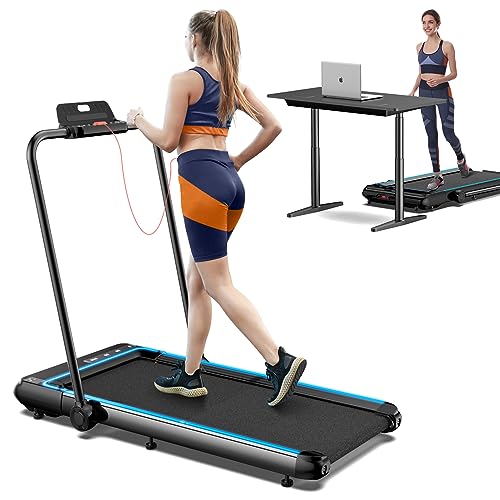treadmills-for-home6179
treadmills-for-home6179
You’ll Never Guess This Treadmills’s Tricks
Understanding Treadmills: Types, Benefits, and Considerations
Treadmills have ended up being an integral part of physical fitness culture, using a convenient service for individuals seeking to enhance their cardiovascular physical fitness without the need for outside spaces or weather condition factors to consider. With a range of features and models available, potential buyers should be knowledgeable to make the very best decision. This article intends to offer a detailed overview of treadmills, including the various types, benefits, and elements to think about when buying one.
The Different Types of Treadmills
1. Handbook Treadmills
Manual treadmills are powered by the user rather than an electric motor. They require no electrical energy and generally include a simple design with less moving parts.
Benefits of Manual Treadmills:
- Cost-effective
- Portable and light-weight
- No dependence on electrical power
Disadvantages:
- Limited functions
- Usually lack incline alternatives
2. Motorized Treadmills
Motorized treadmills are the most common type, powered by an electric motor. They normally offer numerous features such as programmable workout routines, adjustable inclines, and higher weight capacities.
Benefits of Motorized Treadmills:
- Smooth operation and consistent traction
- Flexible with advanced functions for varied exercises
- Alternatives for incline and decrease settings
Disadvantages:
- Higher expense compared to manual treadmills
- Need electrical energy and may increase electric costs
3. Folding Treadmills
Folding treadmills are developed for easy storage, making them ideal for those with restricted area.
Advantages of Folding Treadmills:
- Space-saving style
- Easy to carry and store
- Appropriate for home usage where space is at a premium
Disadvantages:
- Typically might have a smaller sized running surface area
- Weight limit may be lower than non-folding designs
4. Industrial Treadmills
These treadmills are constructed for toughness and efficiency, typically found in fitness centers and gym. They are developed for high use rates and featured advanced features.
Advantages of Commercial Treadmills:
- Extremely resilient and typically supported by guarantees
- Complete variety of functions, consisting of advanced training programs
- Ideal for sturdy workouts
Downsides:
- Higher price point
- May be too large or heavy for home usage
| Type of Treadmill | Power Source | Normal Features | Suitable For |
|---|---|---|---|
| Manual Treadmill | None | Fundamental workout metrics | Minimalist users |
| Motorized Treadmill | Electric | Programmable exercises, incline options | General fitness lovers |
| Folding Treadmill | Electric | Space-saving style | Home users with minimal space |
| Commercial Treadmill | Electric | Advanced training programs | Gym centers |
Advantages of Using a Treadmill
Treadmills provide many advantages for individuals wanting to enhance their physical fitness levels or keep an athletic regimen.
1. Convenience
Owning a treadmill permits users to exercise at their own schedule, getting rid of dependence on climate condition. It supplies flexibility, as workouts can happen day or night.

2. Adjustable Workouts
Many contemporary treadmills include personalized programs to accommodate newbies and experienced professional athletes. Users can change speed, incline, and workout period to take full advantage of the efficiency of their sessions.
3. Tracking Progress
The majority of treadmills come equipped with digital display screens that record crucial data such as range, speed, calories burned, and heart rate. Monitoring this data assists users track their fitness progress gradually.
4. Lowered Impact
Treadmills typically supply a cushioned surface area that can decrease joint impact compared to operating on hard outdoor surface areas, making them an appropriate choice for individuals with joint issues or those recuperating from injuries.
5. Range of Workouts
Users can take part in different workouts on a treadmill, from walking and running to interval training and speed work. Some machines even offer integrated courses that replicate outside terrains.
Considerations When Buying a Treadmill
When buying a treadmill, individuals must consider a number of aspects to ensure they make an informed choice.
1. Area Requirements
- Step Available Space: Before picking a design, measure where the treadmill will be positioned to guarantee it fits easily.
- Think About Folding Options: If area is an issue, think about purchasing a folding treadmill for convenient storage.
2. User Weight and Height
- Check the weight capacity of the treadmill to accommodate its designated users.
- Make sure that the belt length is suitable for users’ strides, especially for taller people.
3. Functions and Technology
- Evaluate whether innovative features like heart rate screens, Bluetooth connection, and integrated training programs are very important for the designated user.
- Examine user-friendly user interfaces and product reviews on display quality.
4. Guarantee and Customer Support
- Evaluation warranty options to comprehend what is covered and for how long. Some designs may use prolonged service warranties or guarantees for parts.
- Evaluate the brand’s track record for client assistance in case of malfunctions or questions.
5. Price Range
- Consider your spending plan but bear in mind that cheaper models may lack features, durability, or guarantee support.
- Explore funding choices if purchasing a higher-end design.
Frequently asked questions About Treadmills
1. What is the average lifespan of a treadmill?
Generally, a premium treadmill can last between 7 to 12 years, depending upon use, upkeep, and build quality.
2. What is the very best treadmill brand name?
Popular brands include NordicTrack, Sole Fitness, Precor, and LifeSpan, each known for their quality and consumer fulfillment.
3. Can I use a treadmill for walking?
Yes, treadmills are perfect for walking, running, or running, making them flexible for users of all fitness levels.
4. How frequently should I service my treadmill?
Routine maintenance is generally recommended every 6 months to make sure optimum efficiency and durability.
5. Is it fine to work on a treadmill every day?
While running on a treadmill daily is appropriate for some, it’s smart to incorporate day of rest or alternate workouts to prevent prospective overuse injuries.
In conclusion, treadmills remain a popular choice for fitness lovers searching for versatility and customizability in their workout routines. By comprehending the different types readily available, their benefits, and crucial aspects to consider throughout purchase, users can make an educated choice that lines up with their physical fitness goals and lifestyles.

